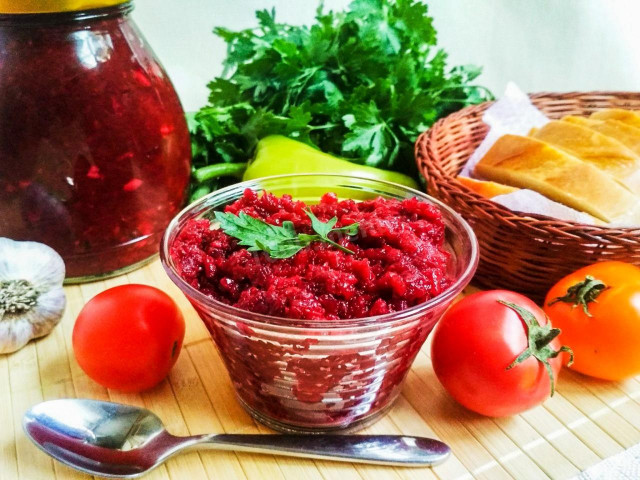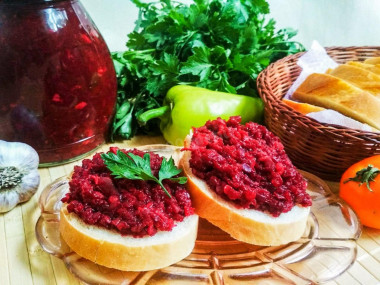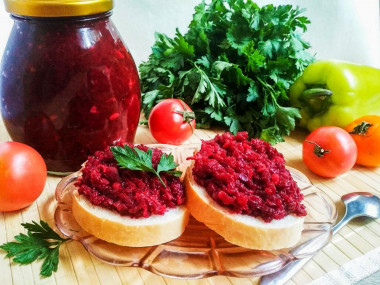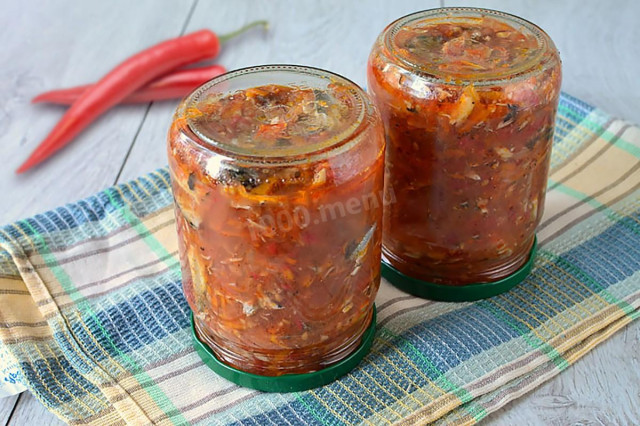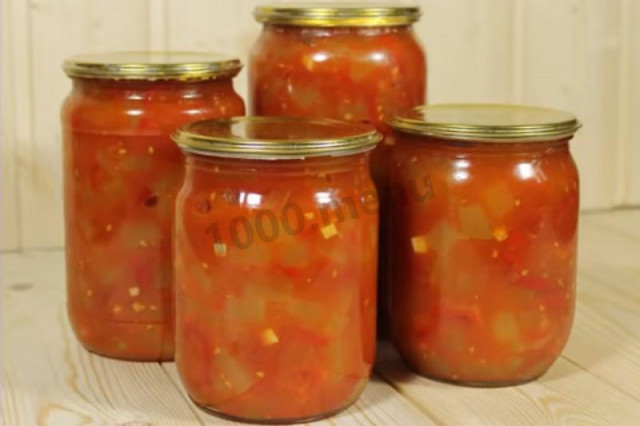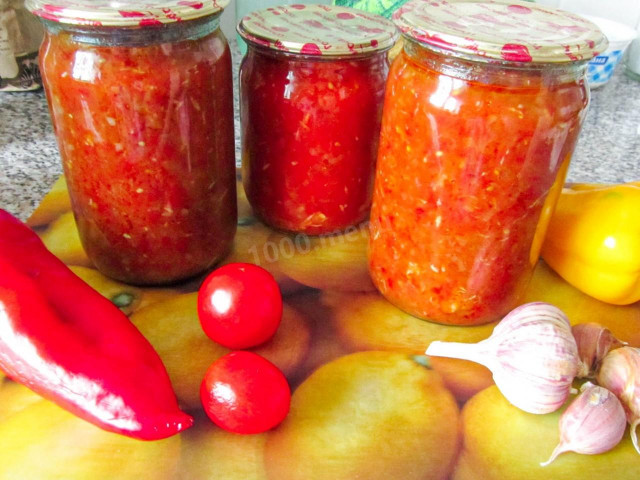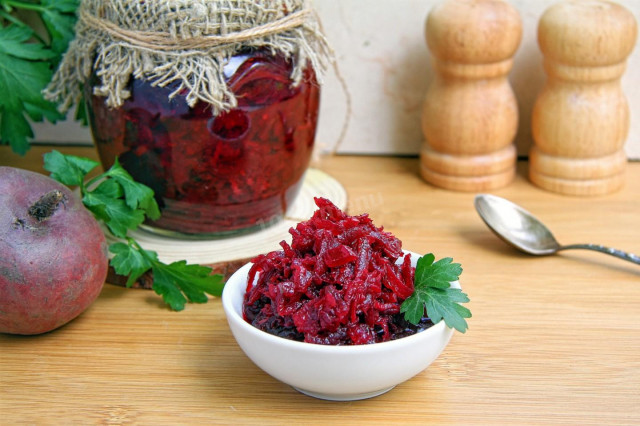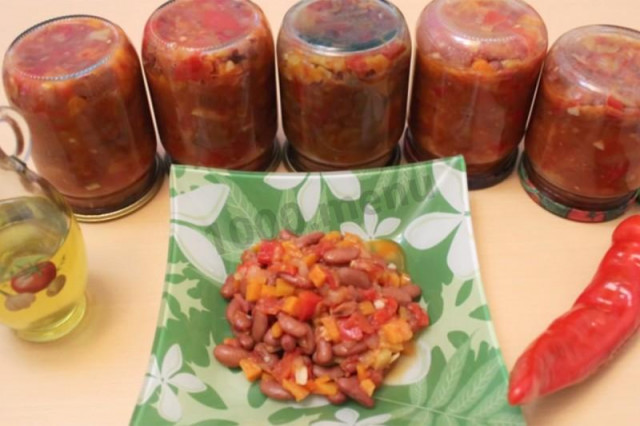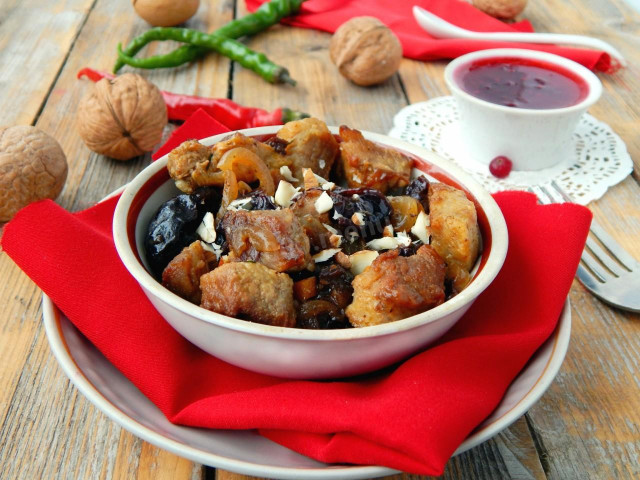Composition / ingredients
Step-by-step cooking
Step 1:
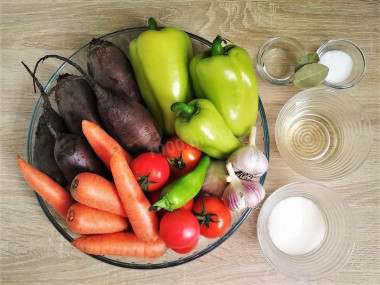
How to make beetroot adjika for winter? Prepare the necessary products. I used young fresh vegetables, measured their amount on the kitchen scales. Rinse the vegetables under running cold water, brush the root vegetables well.
Step 2:
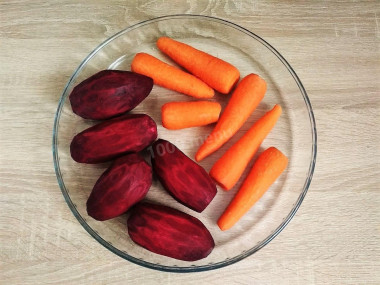
Peel the carrots and beets, wash and dry.
Step 3:
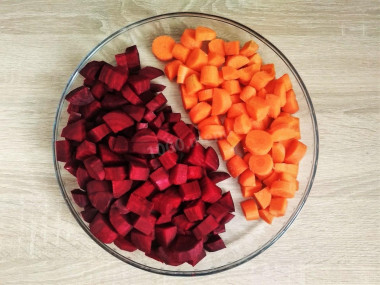
Cut the carrots and beets into small pieces.
Step 4:
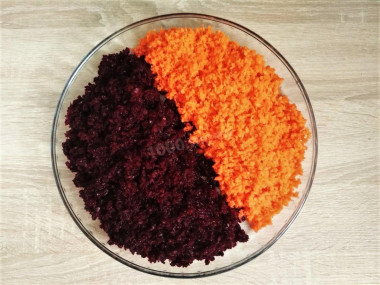
Chop the vegetables in a convenient way for you – using a large grater, meat grinder or food processor.
Step 5:
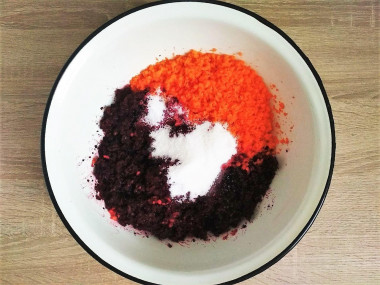
Place the chopped vegetables in a deep bowl. Combine them with salt, sugar and vegetable oil.
Step 6:
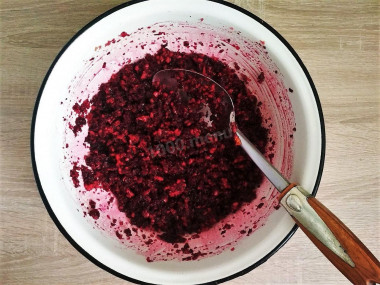
Mix everything well and leave for 10 minutes for the vegetables to let the juice. If your vegetables are not juicy enough, then you will probably need a little more tomatoes or tomato juice in the future than indicated in the recipe.
Step 7:
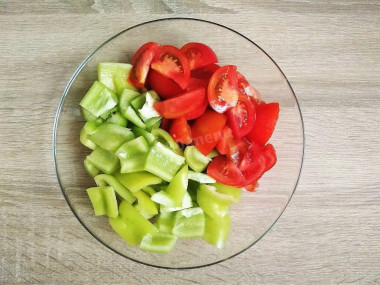
In the bell pepper, remove the seeds and stalk. Cut it into small pieces. Also chop the tomatoes.
Step 8:
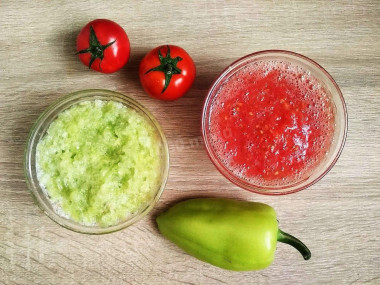
Chop the bell peppers and tomatoes. This can be done with a meat grinder, grater or blender. Instead of tomatoes, you can take 200 ml of ready-made tomato juice.
Step 9:
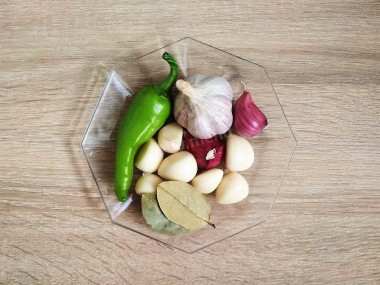
Peel and wash the garlic, cut off the tail from the hot pepper and remove the seeds. Chop the garlic with a knife or using a press, chop the pepper finely. The final taste will depend on the amount of garlic and pepper added to the adjika. You can adjust the degree of sharpness of your adjika by reducing or increasing the amount of garlic or hot pepper to your liking.
Step 10:
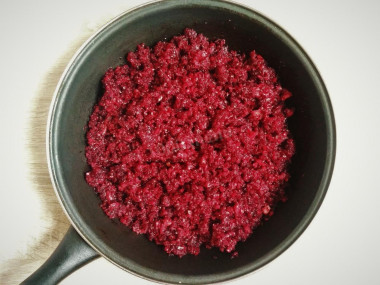
Put the carrots and beets in a deep frying pan, add half a portion of tomato juice. Simmer over low heat, covering the pan with a lid, for 20 minutes. Stir occasionally, if necessary, add a little tomato juice so that the mass does not burn.
Step 11:
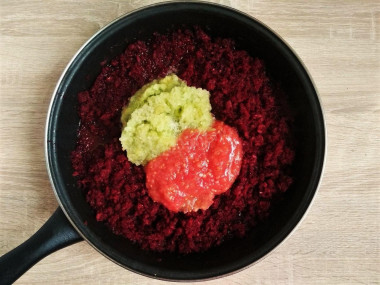
Add the crushed bell pepper and the remaining tomato juice. Mix well.
Step 12:
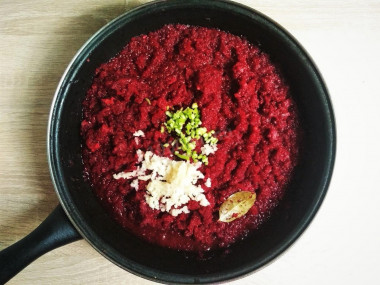
Add garlic, bay leaf and hot pepper.
Step 13:
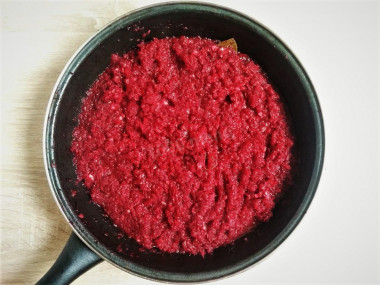
Simmer for 30-40 minutes with the lid closed over low heat, stirring occasionally. When the vegetables are well cooked, try the adjika and, if necessary, add salt or pepper. Then pour in the vinegar essence and mix everything well. If desired, you can grind the finished adjika with a blender to a completely homogeneous consistency, after removing the bay leaf from it.
Step 14:
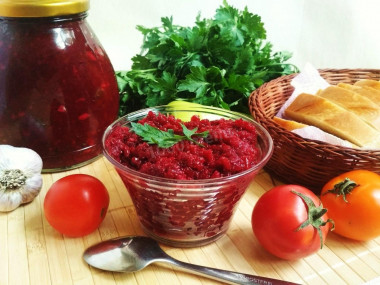
Wash the jars and be sure to sterilize them in a way convenient for you (in the microwave, oven or in a saucepan on the stove). Put the adjika in hot jars and roll up the lids. Leave the adjika on the table until it cools completely, and then remove it to a cool place.
Beetroot adjika for the winter turns out incredibly tasty. It can be served as a sauce for meat, used for sandwiches or even as a dressing for borscht.
It is noteworthy that the taste of the finished adjika is more pronounced after cooling, and even more so after it stabilizes and infuses during the day.
From the specified number of products, approximately two 1.5-liter jars of adjika are obtained.
Bon appetit!
How to calculate the number of cans, why banks explode and how to avoid it, as well as secrets and life hacks, read the article about preparations for the winter.
Since the degree of salinity, sweetness, bitterness, sharpness, acid, burning is individual for everyone, always add spices, spices and seasonings, focusing on your own taste! If you put some of the seasonings for the first time, then keep in mind that there are spices that it is especially important not to shift (for example, chili pepper).
Root vegetables are best washed with a brush or a hard sponge under running water.
Caloric content of the products possible in the composition of the dish
- Tomatoes - 23 kcal/100g
- Beetroot - 40 kcal/100g
- Dried beetroot - 278 kcal/100g
- Boiled beets - 49 kcal/100g
- Sweet pepper - 27 kcal/100g
- Carrots - 33 kcal/100g
- Dried carrots - 275 kcal/100g
- Boiled carrots - 25 kcal/100g
- Garlic - 143 kcal/100g
- Bay leaf - 313 kcal/100g
- Granulated sugar - 398 kcal/100g
- Sugar - 398 kcal/100g
- Vegetable oil - 873 kcal/100g
- Salt - 0 kcal/100g
- Chili pepper - 40 kcal/100g
- Acetic essence - 11 kcal/100g

